| Does the glass sculpture enhance the plants or the
plants enhance the sculpture? The saguaro cactus in the foreground is well
over 50 years old as they don't start to produce 'arms' until this age. | 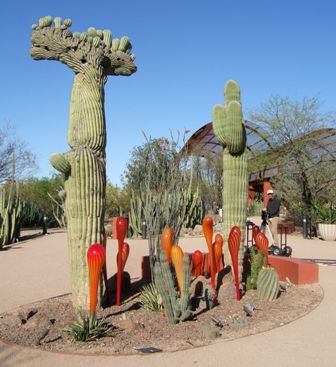 |
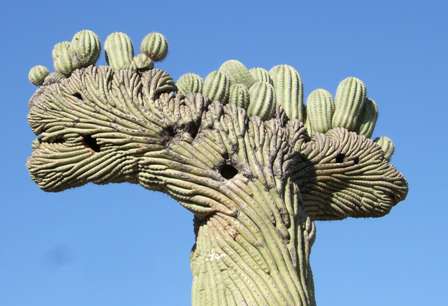 |
But this saguaro cactus has been affected for some unknown reason which
causes them to produce a flattened crest which can be up to 6ft across and
3ft high. Such specimens are called cristate or fasciated or more commonly
known as crested The saguaro
cactus flower is the state flower of Arizona. The root system is shallow
which can sprawl over a 50ft radius and can draw up 200 gallons of water
during a rainstorm. |
| Not all cacti grow upwards. This one creeps along the
ground. | 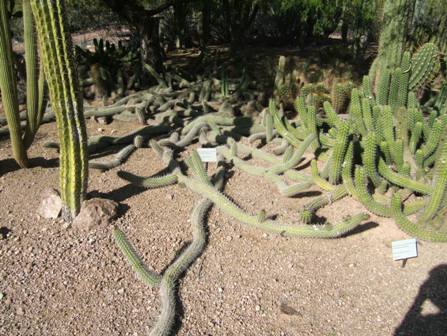 |
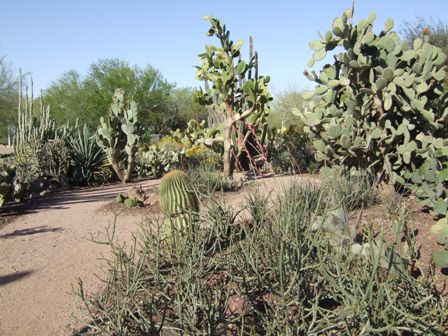 |
|
An overall view of one section of the garden showing some of the variety of
forms that cacti and succulents can take, from the bulky barrel cactus to
the flat 'paddles' of the prickly pear and the green twig-like structure of the
pencil cactus in the foreground. |
| The flower spike of the agave looks like bunches of
small bananas when in bud but these open to masses of flowers that attract
lots of insects. | 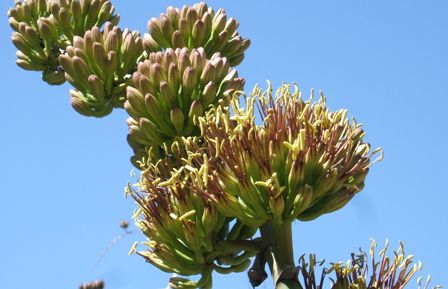 |
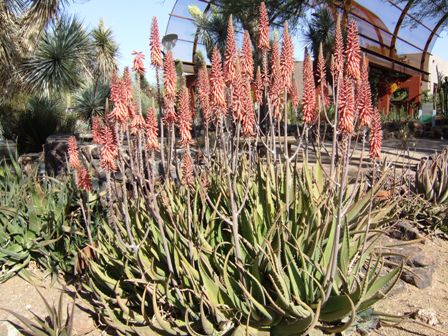 |
This is aloe, another type of succulent. It has a lot of medical uses. These flower heads are quite
reminiscent of red hot poker. |
| A change of colour here with the delicate blue flowers
of the desert bluebells. | 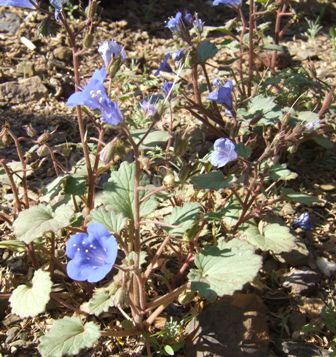 |
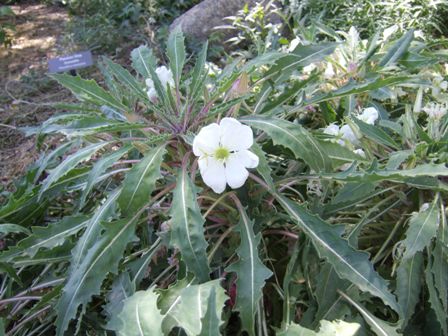 |
Evening primrose grows well here. |
| Fairy duster commonly has red flowers, but this is a
white version. | 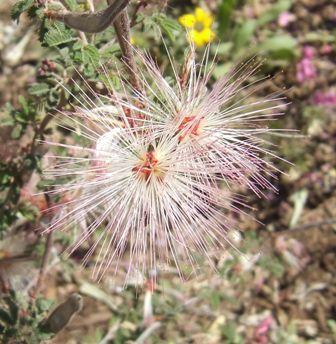 |
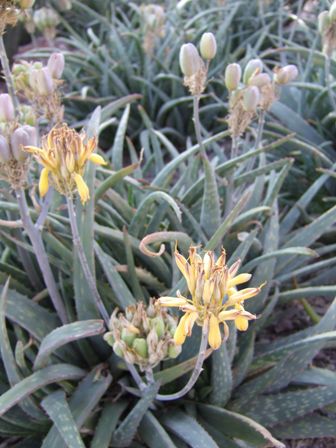 |
A different form and coloured member of the aloe family. |
|
Several examples of the teddy bear cholla. The spines appear soft and fluffy
from a distance, and look especially appealing backlit by the sun, but you
need to be careful around this cactus too. | 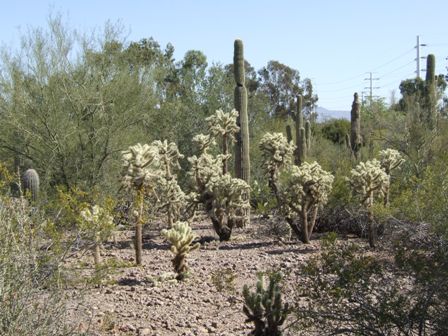 |
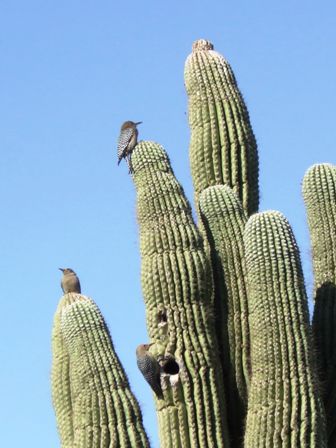 | However the birds don't seem to have a problem at all.
This saguaro seemed to be particularly popular, and you can see where holes
have been pecked out to make nests. |
|
Everything is making new growth in spring, and the new spines are a lovely
dark red which, from a distance, look like a flower. But there are lots of
animals in the desert that would enjoy the tender new growth, so the spines
are already stiff and sharp to deter them. | 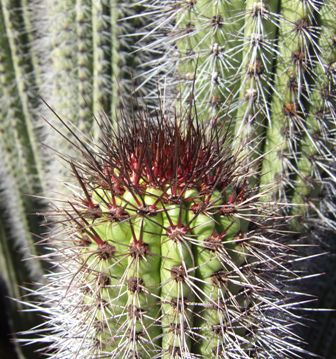 |
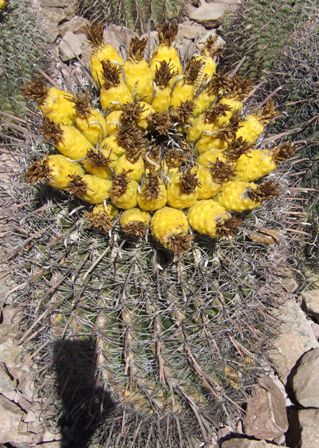 |
Again from a distance these look like yellow flowers, but they are the fruit
of the barrel cactus. |
|
Not all cacti grow tall. The botanical garden has a number of
representatives of this shape. I always thought that florists stuck the
small flowers on for show, but they really do grow like this. | 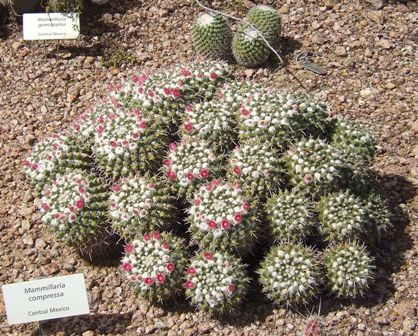 |
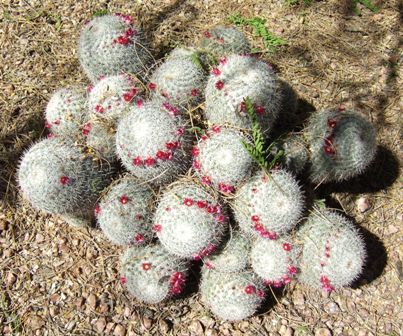 | And this cactus looks very much like a pile of fluffy
white tennis balls with pink seams. |
|
A variation on the small balls shape known as a brain cactus. | 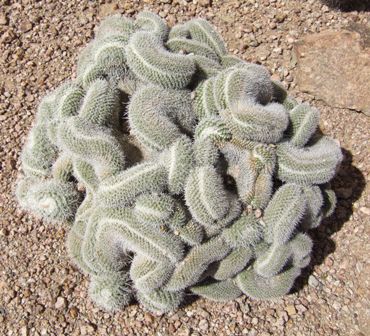 |
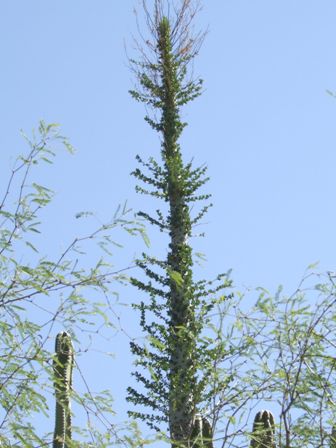 |
The boojum tree never grows branches as the leaves come straight from the
trunk. |
| The chain fruit cholla is so called because successive
fruits grow out of the first one. | 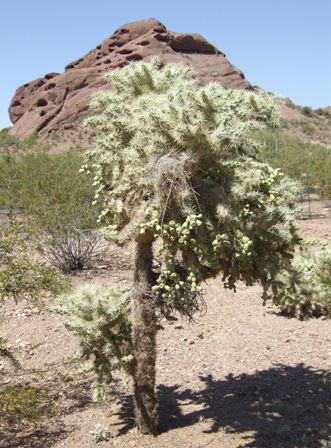 |
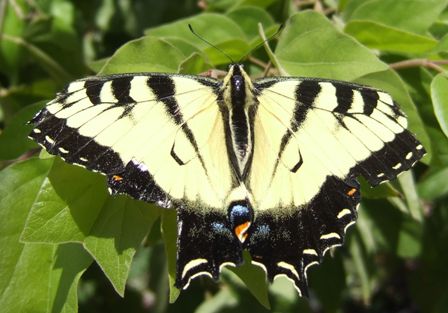 |
The botanical gardens has a butterfly house which is only open for the
season when the butterflies are alive. This is a Zebra Swallowtail which is
the state butterfly of Arizona. |
| A Zebra Longwing. | 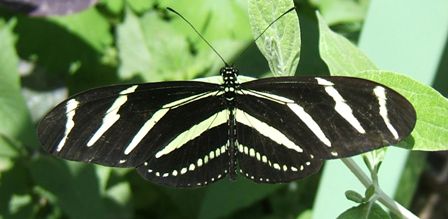 |
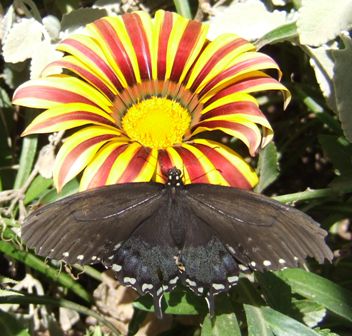 |
Pipevine swallowtail. It looks as though this butterfly is going to have a
feast on this large flower. |
| More of the pipevine swallowtails, they just happened
to have set themselves out in this 'line astern' for us as we passed. | 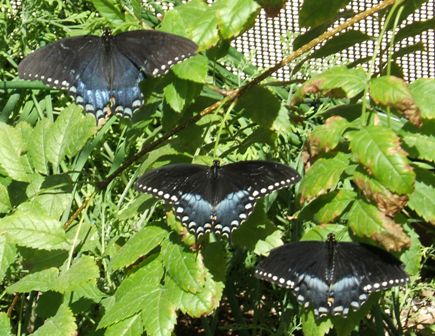 |
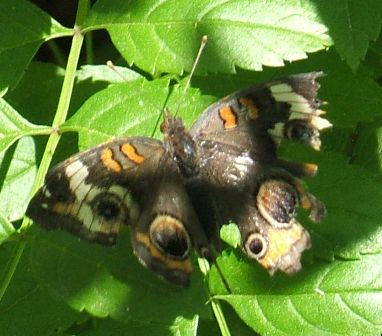 |
A buckeye. The large round shapes are designed to fool a predator into
thinking the prey is at the end furthest from the body. Has it worked? This
one does seem to have been in the wars. |
| An orange Julia butterfly. | 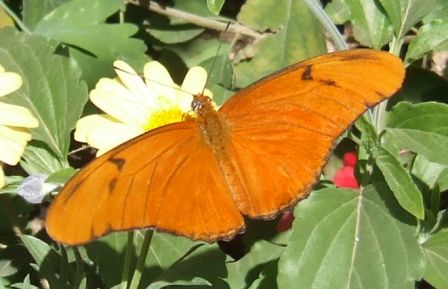 |
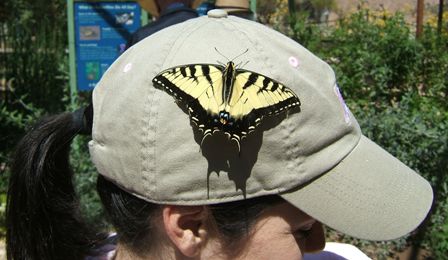 |
Butterflies seem to be unaware of humans as a threat so just land wherever
the fancy takes them. This zebra swallowtail landed on someone's baseball
cap and stayed there for about five minutes before fluttering away. |
|